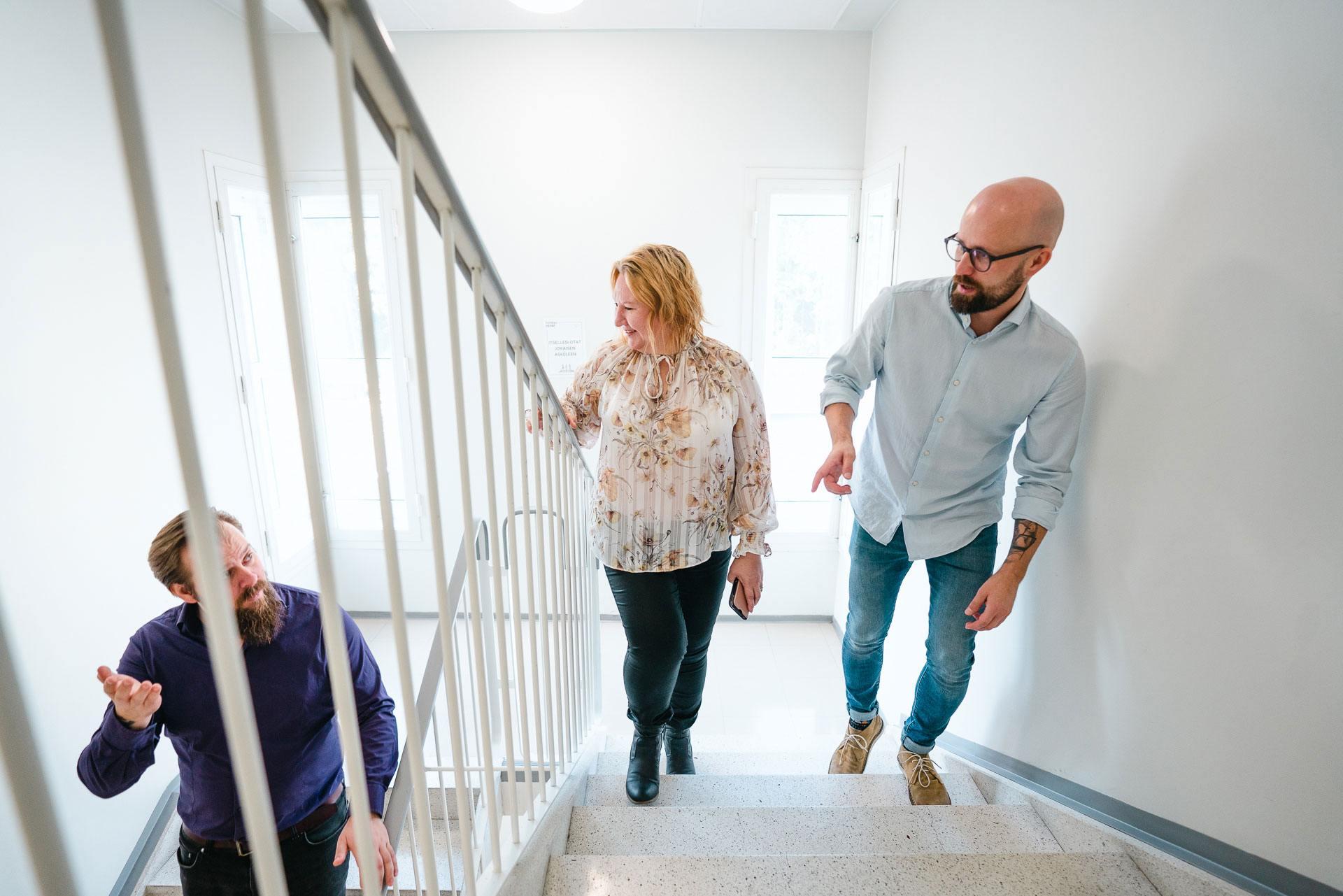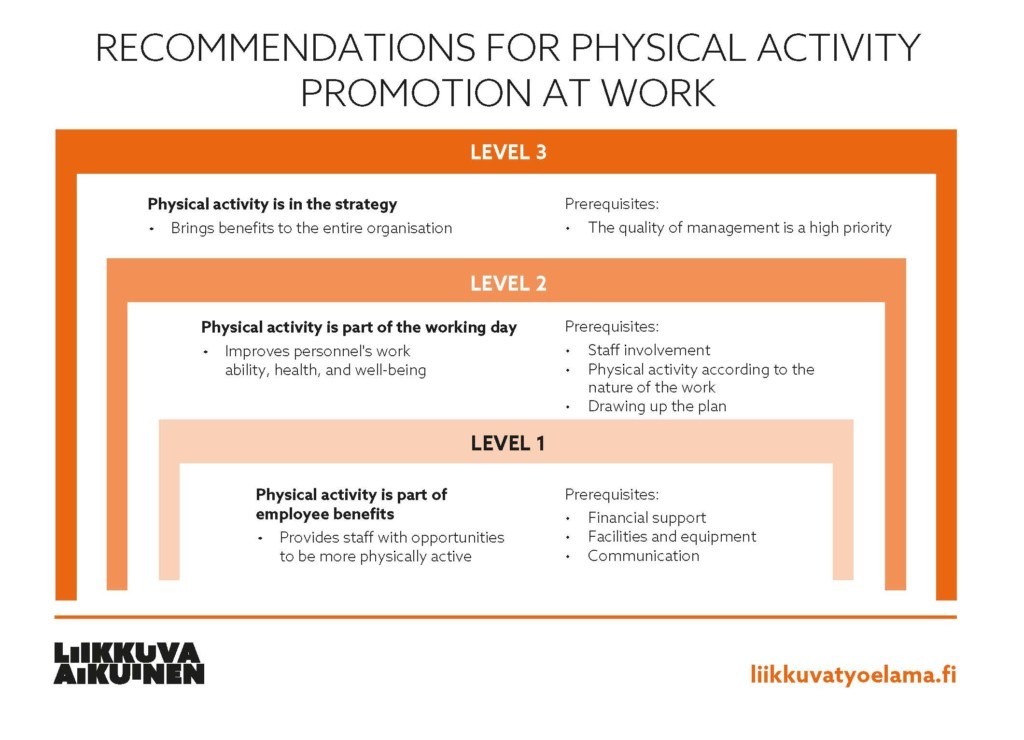
RECOMMENDATIONS FOR PHYSICAL ACTIVITY PROMOTION AT WORK
The results of the Barometer on physical activity at workplaces (2021) provided a good basis for the recommendations. The recommendations have three levels, each of which increases the level of activity and the benefits achieved.

Download the infograph as a PDF-file.
LEVEL 1: Physical activity is part of employee benefits
This is a good baseline that motivates personnel to be more physically active. Sports and well-being services are part of the employee benefits, in addition to which there are facilities and equipment for exercise. Furthermore, the personnel is informed about available services. At this level, the solutions are clear and often easy to implement for the employer. Remote work and the nature of the work should be taken into account in the solutions.
Financial support: Personnel is offered a flexible sports benefit.
- Financial support encourages personnel to exercise in the manner they choose.
- According to Finnish legislation, the employer can support an employee’s physical activity tax-free up to EUR 400 per year. The employee benefit must be equally available to all employees.
- Company-owned or company-leased bicycles can be offered to employees tax-free up to EUR 1,200 a year.
Facilities and equipment: Personnel is provided with facilities and equipment for exercise, such as:
- exercise equipment is available in break rooms
- active commuting is made easier by safe bicycle parking, changing rooms and washroom facilities
Communication: The personnel is informed of the benefits and opportunities offered.
- Communication takes place regularly on multiple channels.
- The more active the communications, the bigger the percentage of the personnel using the services.
LEVEL 2: Physical activity is part of the working day
At level 2, physical activity is an integral part of the working days. Active breaks help support recovery, level of alertness and coping. The solutions improve the staff’s working capacity, health and well-being. The objective is for more and more people to participate in the exercise offered. At this level, it is important to draw up a physical activity plan.
Staff involvement: The personnel has an opportunity to influence the content of the exercise offered.
- Wishes and needs can be collected through open discussions or well-being surveys.
- Involving the personnel increases their motivation to be physically active.
Physical activity according to the nature of the work: Different work tasks require different kind of exercise.
- For example, the activity level of sedentary working will be increased, and the recovery of employees doing physical work will be improved.
- Co-operation with the occupational health care provider and the occupational health and safety officers helps to find specific solutions, taking into account the requirements and risks of the work.
Drawing up the plan: A physical activity plan is drawn up based on needs and wishes.
- It is enough to provide at least two other options alongside financial sports benefits and facilities or equipment. These may include exercise breaks, campaigns or physical activity measures offered by occupational health care.
- Personnel’s feedback and experiences help in monitoring and developing the implementation of the plan. Occupational health care indicators may also be used.
LEVEL 3: Physical activity is in the strategy
When physical activity is included in the strategy, it increases the intangible capital of the organisation. This means that communality, atmosphere and productivity increase and the employer image improves. It helps not only to improve personal work ability, health and well-being but also brings benefits for the work community.
At level 3, management is human-oriented, personnel is involved, supervisors are trained and the promotion of well-being at work is systematic. The amount of activities offered and the level of staff participation in the activities depends on the style of management.
The quality of management is a high priority: Physical activity at work is part of management.
- The physical activity plan is based on the organisation’s strategy or personnel strategy.
- The work community is involved and their wishes are taken into account. Cooperation with the occupational health care provider and the occupational health and safety officers is active.
- Management is trained in physical activity and well-being related issues.
- Physical activity is visible in the daily life of the work community in both talk and actions.
- When physical activity is encouraged by managers and colleagues, the motivation for staff participation increases.